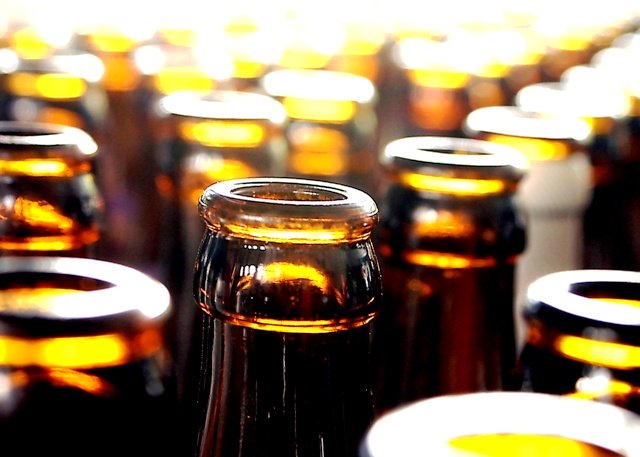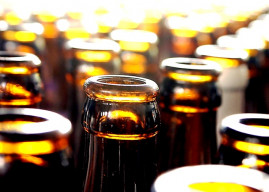
Commonly known as tharra or kacha sharab, this acidic, white moonshine tastes pleasant to the tongue, making it a popular choice. Most local liquor manufacturers claim that the methodology to produce this concoction was smuggled from India during the 1970s, when alcohol consumption and sale was banned in Pakistan. Initially it was just bottled whiskey that was snuck in by smugglers, but the cross-border migration eventually bought in those who knew how to make it as well. They were mostly immigrants from Kachh Bhuj and the Rajasthan area that brought the formula for making kacha sharab with them, which eventually spread all across the country.
The local version is a concoction of various low-priced ingredients such as gurrh (brown sugar), orange peel, acacia bark, paneer dodi (a medicinal herb botanically known as Withania Cougulans) and noshader (a type of inorganic salt). These ingredients are fermented in unhygienic conditions and sold in the market at a throwaway price of Rs300 a bottle, compared to the branded alcohol being sold through bootleggers and officially licensed shops, which costs nearly ten times more.
Not only is the local moonshine more affordable but its demand particularly shoots up during times of a shortage. Lapses in supply often open up space for counterfeit products to flood the market, with bootleggers tampering genuine alcohol with the local version to stretch inventory. But the cheap price tag conceals huge health hazards, as it is known to cause blindness and even lead to death.
The effects of consuming inferior quality liquor can take up to five days to become noticeable. If the heart or liver is damaged, the body releases SGPT (serum glutamic pyruvic transaminase) into the blood. This may cause irreversible damage to the optic nerve, making it one of the most common after-effects of drinking adulterated alcohol. In December, 2011, two journalists in Karachi were blinded while three others lost their lives, after consuming dry gin that was spiked with moonshine, The Express Tribune reported. Instances like these are fairly common across the country but according to officials at government hospitals, monitoring the number of people who fall prey to the moonshine is difficult as families brush it under the carpet to avoid police investigation.

Decomposed ingredients are ready for fermentation
While most doctors lament the harmful effects of consuming this liquor and have deemed it unsuitable for human consumption, the manufacturers disagree. A local producer who has been involved in the business for the past 28 years claims that he is an expert at determining the quality of his product. He says that the test is simple. “You just take a matchstick and dip it into my sharab [liquor]. If the matchstick catches fire, it means the quality of this sharab is excellent and acceptable for buyers.” He further claims that the alcohol becomes even stronger, almost as good as wine, if bottled for a month.
Despite being banned, the production and sale of kacha sharab flourishes throughout the country, being far more prevalent in the countryside. While the usage is far more common among men, a small proportion of women are also known to be regular consumers.
According to the United Nations Office on Drug and Crime, drug and alcohol usage is becoming increasingly common in Pakistan. A report on drug usage launched during the Commission on Narcotic Drugs this year revealed that 5.8 percent of the population in Pakistan used drugs in the past 12 months.
Being addicted to substances is dangerous, but resorting to cheap substandard alternatives to satisfy those urges can be lethal. Hence, it is no surprise that in a country where almost a quarter of the population lives below the poverty line and peace of mind is scarce, what starts out as a cheap distraction for some, often culminates in death instead.
Recipe
To prepare one litre liquor
Old Gurrh 1,000 grammes
Accacia bark 500 grammes
Paneer dodi 250 grammes
Noshader 100 grammes
Orange 250 grammes
Grapes, apple, sapodilla (chikoo), banana and fennel are occasionally used to give the liquor a distinct flavour.
Method to the madness
Old gurrh, acacia bark, paneer dodi, noshader and orange rind are placed in a clay jar (matka) and covered. The clay pot is placed in a pit in a way that half of it remains buried into the soil while the other half remains above the surface. The process exposes the jar’s contents to heat from the soil, allowing it to decompose. The decomposition takes about five to seven days, during which the manufacturer keeps checking regularly. Once the decomposition is complete, the mix is carefully removed from the clay pot and transferred into a metal container. The metal container is sealed and placed over fire, snuggled between two pots. The pot below serves as a bain marie while the pot of cold water placed above helps condense the vapour. The alcohol is then collected drop by drop using a pipe, and transferred into bottles.
Published in The Express Tribune, Sunday Magazine, November 3rd, 2013.a
COMMENTS (9)
Comments are moderated and generally will be posted if they are on-topic and not abusive.
For more information, please see our Comments FAQ































1714024018-0/ModiLara-(1)1714024018-0-270x192.webp)









the yeast is missing from the recipe, won't ferment w/o that
Thanx for the recipie...............God bless u...jannat khareed li hai aap nay.
Good article. There are dangers of consuming poorly manufactured unregulated liquor. It is better to brew your own, if you are so inclined. The recipe and the method of brewing is not rocket science. Wine existed at the time of Noah, and the recipe should be easy to find on the net.
Is E-Tribune empty of any Positive stuff to share? I mean whats logic of sharing this kind of Article
ET you are definitely helping new entrepreneurs
Smart thinking, Tribune, for sharing the recipe, with young "wannabees" of our nation. Shame on you. You people don't have the vaguest concept of self-policing, do you
@farheen: Good luck with the blindness, nervous attacks and liver malfunctions. Or, I can lend you some money for imported booze.
The Absolute is without an 'e', i.e. Absolut Vodka. Just saying.
thanks for sharing the recipe...